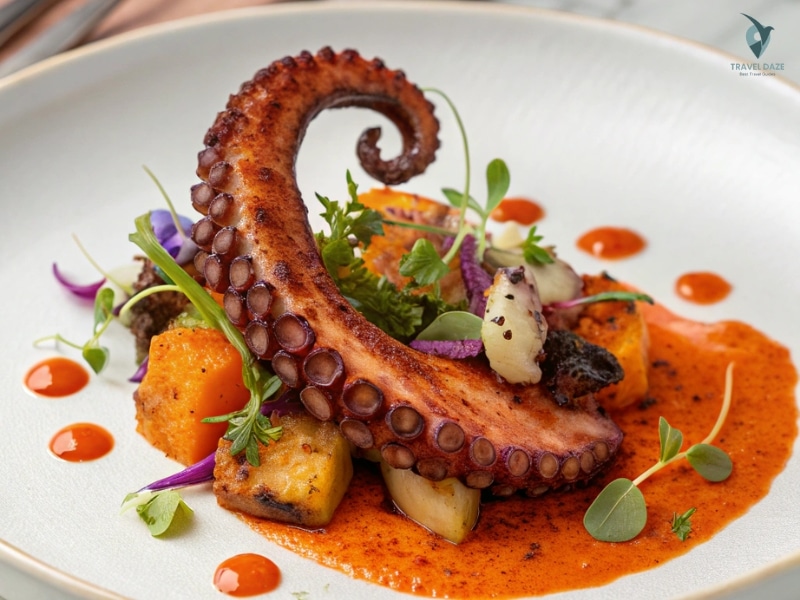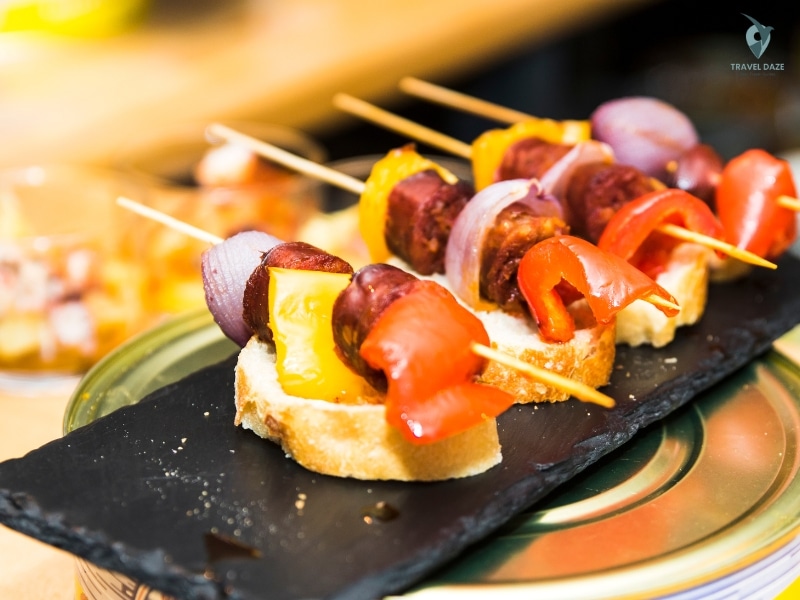I built this guide from visits and late-night walks — cultural experiences in san juan that hit the senses, from salt air on the ramparts to the rattle of salsa drums down a narrow lane.
Table of Contents
ToggleI’ll point you to hand-picked tours, neighborhoods, and meals that feel honest and lively. Expect clear tips for booking through hotel concierge at The Royal Sonesta San Juan, fast notes on El Morro, Old San Juan, museum stops, rum tastings, and food tours.
What I promise: vivid detail you can use now, simple logistics that keep your day flowing, and local-minded picks that respect community life. I favor human stories over checklists—small moments that stay with you after you visit puerto rico.
Key Takeaways
- Use hotel concierge for syncing tours, tickets, and timing.
- Mix UNESCO sites with neighborhood hangouts for balance.
- Book food and rum tours early—slots fill fast.
- Listen for live music and follow it; great finds happen by ear.
- Come curious and respectful; human connection rewards the visit.
- Plan one full day or stitch stops into a long weekend for best flow.
Old San Juan’s living history, color-drenched streets, and timeless rhythm

Morning light makes these streets feel alive—pastel walls glow and the city seems to breathe. I start early to catch cool air, the blue adoquín underfoot, and quiet plazas before the day grows busy.
Stroll Calle San Sebastián to the blue cobblestones and pastel facades
Walk Calle San Sebastián and listen—music drifts from open doors, vendors set up, and people move at an easy pace. Pause for a cafecito at a small café and watch neighbors chat; those moments show puerto rican warmth best.
Step into Museo de las Américas for Taíno, African, and Spanish heritage
Visit Museo de las Américas inside the Ballajá Barracks. The galleries trace Taíno, African, and European threads across the island’s history. The courtyards feel calm—cool stone, filtered sun, and echoes that slow your step.
Feel the trade winds at El Morro and watch kites sweep the Atlantic
Follow the breeze to El Morro. The fort’s green lawns invite you to sit, watch gulls, and see kites paint the sky over the Atlantic. Let the bastions frame the view—history arrives gently here, without a lecture.
- Start early for soft light and empty streets.
- Duck into side lanes for hidden plazas and tiled doorways.
- Loop the walls by day toward La Perla for coastal views.
La Placita de Santurce after dark: music, dance, and neighborhood soul
When dusk falls, La Placita becomes a warm, loud theater of music and movement that pulls you out onto the street. I time visits for Thursday or Friday night — energy rises early and the plaza hums as shutters lift.
You’ll hear salsa and bomba pulse from bandstands and bars; even shy feet catch the beat. Order a cold drink, step into the square, and let locals guide the tempo with friendly nods.
Practical tips:
- Wear comfy shoes and light clothes — the night gets warm as bodies sway.
- Keep your phone pocketed and set a meetup spot — crowds and loud music can swallow signals fast.
- Eat between sets — grab empanadillas or skewers near the stalls to keep your energy up.
This is more than nightlife; it’s a neighborhood hangout where abuelitos dance beside students. Move with respect, mirror the locals’ pace, and end the night with a slow stroll so the sounds settle before you head back to your hotel.
Loíza’s Afro-Puerto Rican roots through bomba, art, and folklore

A short drive brings you to Loíza, where drums still map memory and movement. I come here to learn, not just to watch. The town is widely known as the birthplace of bomba and plena, and you feel that lineage in every step.
Meet the drum: learning bomba and plena where they were born
Start with listening. A local class opens with the drum’s heartbeat and a short history of afro-puerto rican roots. The lead dancer calls and the drummer answers — each motion is a line of talk. Teachers break down stance, skirt work, and rhythm so you can join with respect.
Visit Samuel Lind’s studio and the craft of the Vejigante mask
Samuel Lind’s studio feels like a portal—wood, bronze, and canvases catch the light. Ask about process; artists explain how place and memory braid into every piece. Nearby, mask makers show carving and paper‑mâché layers. The bright, fierce faces of the vejigante come alive in your hands.
- Join a local tour to learn how rhythms traveled and were kept alive.
- Buy masks directly from makers and honor rican roots.
- Leave time to sit by the water and let bomba sit in your chest.
I’ll ground you in respect — listen first, ask questions, and honor the tradition‑bearers. Loíza rewards patience: the culture opens when you move with care and curiosity.
Piñones chinchorreo: coastal breezes, kiosks, and street food magic

Drive a few minutes toward the coast and you hit a ribbon of kiosks, each one promising a different golden bite. I roll the windows down—salt air, palms leaning, the sizzle of fryers like a drum beat.
Start at the first line of stalls and scan the pans. Golden alcapurrias shout savory; order large bacalaítos with crisp edges and a tender center. Grab a cold coconut to reset your pace between plates.
Chinchorreo is grazing. Two bites here, a skewer there—slowly the afternoon becomes a string of small delights. Walk the boardwalk by the mangroves; the water flashes silver and the breeze cools your cheeks in this coastal area.
- Pack napkins and cash — lines move fast and you’ll want to keep tasting without fuss.
- Ask vendors what’s fresh — their pride points you to the best pans of the day.
- Leave time for a quick swim or a piragua to finish — sweet, icy, perfect.
This stretch sits just minutes from San Juan and shows a slice of Puerto Rico that feels like home. It’s simple, bold, and utterly authentic Puerto Rican — built for sharing on the island and for memory-making that stays long after you drive back toward the city.
Guided tours that deepen cultural experiences in San Juan

I lean on guided routes to reveal tucked-away courtyards and local stories that map the city’s heartbeat. A smart tour saves time, adds context, and points you to real favorites I’d miss on my own.
Old San Juan walking tour for hidden courtyards and local stories
Why go: A walking tour unlocks chapels, patios, and stories tied to each doorway. Concierges at The Royal Sonesta San Juan often book these — handy for timed entries and smooth logistics.
El Morro tour for UNESCO history and sweeping ocean views
Why go: The El Morro tour makes history tactile. Guides explain cannon lines, trade routes, and storms while the surf frames the view—great for visitors who want context with the vista.
Puerto Rican food tour to taste alcapurrias, mofongo, and more
Why go: Food tours layer flavor with backstory. You move from fritters to mofongo while a guide ties dishes to neighborhood life—so the taste sticks with you.
Rum tour to sip heritage in island distilleries
Why go: Rum tours trace cane to cask—molasses, oak, and technique. They show how Puerto Rico shaped global spirits and keep the tasting lively and instructive.
- Pick one tour that fills your biggest gap—food for flavor, El Morro for history, rum for craft.
- Ask guides for their secret stops; those tips often become the best bites and views.
- Book through your hotel concierge to align timing, transport, and authentic experiences with ease.
Art, museums, and neighborhoods that frame the city’s creative pulse
I follow light and color—Ballajá’s cool arches first, then Santurce’s loud, living walls. My route balances quiet galleries with open-air work and friendly street scenes.
Museo de las Américas and the Ballajá Barracks’ storied halls
Museo de las Américas sits inside Ballajá’s stone wings. Walk the echoing corridors, pause under arches, and read labels that tie Taíno, African, and European threads to puerto rico’s living traditions.
Galleries mix artifacts with contemporary voices—this is a place that asks you to listen and look. Step outside and trace old san lines; the past feels close enough to touch.
Santurce murals and plaza life by day
By midday I head to Santurce. Paint still dries on broad murals that turn whole streets into open galleries.
Pause in a plaza for coffee or juice—soft music drifts, neighbors talk, and artists often work nearby. Ask questions if a muralist is present; brief chats lead to richer perspective.
- Start at Ballajá, then walk toward Santurce to feel contrast.
- Support artists: buy a print, a zine, or a small piece at a pop-up.
- Loop back toward old san juan for golden hour—light flatters every façade.
Where to stay for an authentic base in the San Juan area
Where you rest shapes how you remember a place. I pick two kinds of bases that match most travel styles: intimate streetside charm or a beachside resort that handles the details.
Boutique charm near old san cobblestones
Choose a boutique hotel with creaky floors and a shaded courtyard if you want quiet mornings and photo-ready streets. You step out at dawn, sip coffee, and walk empty lanes for great light.
Who it fits: couples and solo travelers who value intimacy, easy walking, and room with character.
Beachfront comfort at The Royal Sonesta on Isla Verde
The Royal Sonesta offers a lagoon-style pool, beach access, and a concierge who books tours and tickets. It gives families room to spread out and makes transit to old san juan days simple.
Who it fits: families or travelers who want a resort feel, quick bookings, and a base for day trips.
- Pick courtyard quiet or ocean shimmer—ask for the light you love.
- Use concierge to lock food, rum, and museum tours for a smoother trip.
- Both options keep old san walking days easy and evenings flexible.
- Choose stays that amplify authentic experiences and cut travel friction.
Conclusion
Leave room for surprise—an unplanned dance or a new friend can change how you remember the island. Let a guide or concierge at The Royal Sonesta San Juan help book a tour that matches your pace.
If you take one image away, make it the drum: bomba calls you into afro-puerto rican rhythm and history. Walk Calle San at sunrise for quiet streets and the best light.
Eat street food with joy—ask about recipes and tip makers. Visit museums and murals; your respectful attention keeps traditions alive and supports local craft.
Choose a boutique hotel for charm or a beach base for ease. Respect neighborhoods, stay curious, and plan to return—more of puerto rico waits beyond any single trip.





